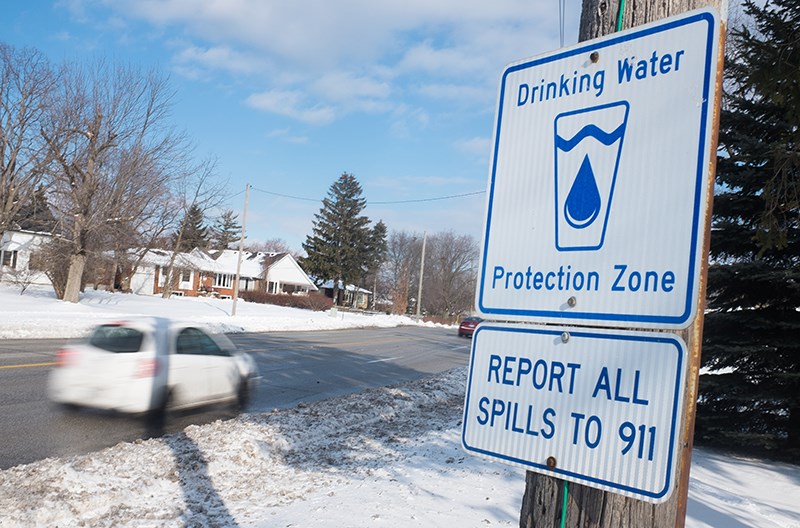Troy Shantz
Six street signs posted around town read ‘Drinking Water Protection Zone,’ and every day they’re passed by countless drivers and pedestrians without a second thought.
A Drinking Water Protection Zone?
What’s up with that?
The signs indicate you have entered what officials call an Intake Protection Zone, which means it’s a sensitive area close to a drinking water intake.
Should a major chemical spill occur within the zone — classified as 34,000 litres, about the load of a tanker truck — the drinking water supply could be at risk of contamination.
Sarnia, Point Edward and a number of other Lambton communities get their water from the Lambton Area Water Supply System, which draws raw water from the mouth of Lake Huron at Point Edward.
Petrolia’s drinking water comes from an intake located offshore of Waterworks Road in Bright’s Grove.
The Sarnia’s protection zones radiate outward from each of these two locations.
(Sarnia also monitors the outer reaches of the Wallaceburg zone, whose intake is in the upper St. Clair River).
Regulations taking to effect on Dec. 31 2015 required that street signs notify motorists when they are entering these sensitive areas.
“The closer you are to the intake, the more vulnerable,” said Girish Sankar, director of water resources at the St. Clair Conservation Authority.
Zone one covers a one-kilometre radius of the water intake. Zone two covers an area in which contaminants could reach the intake within two hours of a spill. Two hours is also about how long it takes to shut down a water intake system, Sankar said.
Zone three signs are placed at the boundary of where, in a “hypothetical situation,” a major spill occurred during a heavy downpour or flood, he added.
Should a real spill occur, calling 911 would alert the Ministry of the Environment, the local spill control centre, the city, the St. Clair Conservation Authority, and the water treatment plant operator.
“At that point, we can really look at if the contaminant is going to reach that intake,” Sankar said.
City planner Nancy Bourgeois said the Sarnia’s role in protecting local water intakes stems from Ontario’s Clean Water Act.
The act was passed after E. coli contaminated the water supply in Walkerton, Ont. in May of 2000, resulting in seven deaths and nearly half of the town’s residents falling ill.
